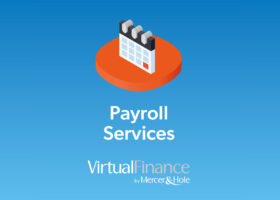The Supreme Court has decided (BNY Corporate Trustee Services Ltd & Ors v Neuberger [2013] UKSC 28) that the balance sheet test in s123(2) Insolvency Act 1986 requires “a petitioner to satisfy the court, on the balance of probabilities, that a company has insufficient assets to be able to meet all its liabilities, including prospective and contingent liabilities”.
Lord Walker’s leading judgement given on 9 May 2013 makes clear that “the point of no return” or “the end of the road” (concepts that have been in use since the Court of Appeal decision in March 2011) are not part of the balance sheet test.
Three key paragraphs from Lord Walker’s judgement are:
41. Lord Neuberger MR developed [his discussion of s123(2)] at paras 47 to 49 of his judgment:
“47. More generally, I find it hard to discern any conceivable policy reason why a company should be at risk of being wound up simply because the aggregate value (however calculated) of its liabilities exceeds that of its assets. Many companies in that position are successful and creditworthy, and cannot in any way be characterised as ‘unable to pay [their] debts’. Such a mechanistic, even artificial, reason for permitting a creditor to present a petition to wind up a company could, in my view, only be justified if the words of section 123(2) compelled that conclusion, and in my opinion they do not.
48. In my view, the purpose of section 123(2) has been accurately characterised by Professor Sir Roy Goode in Principles of Corporate Insolvency Law, 3rd ed (2005). Having referred to section 123(1)(e) as being the ‘cash flow test’ and to section 123(2) as being the ‘balance sheet test’, he said this, at para 4-06:
‘If the cash flow test were the only relevant test [for insolvency] then current and short-term creditors would in effect be paid at the expense of creditors to whom liabilities were incurred after the company had reached the point of no return because of an incurable deficiency in its assets.’
49. In my judgment, both the purpose and the applicable test of section 123(2) are accurately encapsulated in that brief passage.”
42. Toulson LJ agreed with Lord Neuberger MR but expressed himself in a more guarded way. He agreed that Professor Sir Roy Goode had “rightly discerned the underlying policy” (para 115) but added (para 119) that Professor Goode’s reference to a company having “reached the point of no return because of an incurable deficiency in its assets” illuminates the purpose of the subsection but does not purport to be a paraphrase of it. He continued:
“Essentially, section 123(2) requires the court to make a judgment whether it has been established that, looking at the company’s assets and making proper allowance for its prospective and contingent liabilities, it cannot reasonably be expected to be able to meet those liabilities. If so, it will be deemed insolvent although it is currently able to pay its debts as they fall due. The more distant the liabilities, the harder this will be to establish.”
I agree with what Toulson LJ said here, and with great respect to Lord Neuberger MR I consider that “the point of no return” should not pass into common usage as a paraphrase of the effect of section 123(2). But in the case of a company’s liabilities that can as matters now stand be deferred for over 30 years, and where the company is (without any permanent increase in its borrowings) paying its debts as they fall due, the court should proceed with the greatest caution in deciding that the company is in a state of balance-sheet insolvency under section 123(2).
48. The crucial issue, to my mind, is how far the Court of Appeal’s conclusion depended on the “point of no return” test. For reasons already mentioned, I consider that that is not the correct test, if and in so far as it goes beyond the need for a petitioner to satisfy the court, on the balance of probabilities, that a company has insufficient assets to be able to meet all its liabilities, including prospective and contingent liabilities. If it means no more than that, it is unhelpful, except as illuminating (as Toulson LJ put it) the purpose of section 123(2).
It remains the case that the balance sheet test is not a mechanistic or accounting exercise, but a judgment about whether a company will be able to pay its contingent and prospective creditors.







 8 mins
8 mins 

